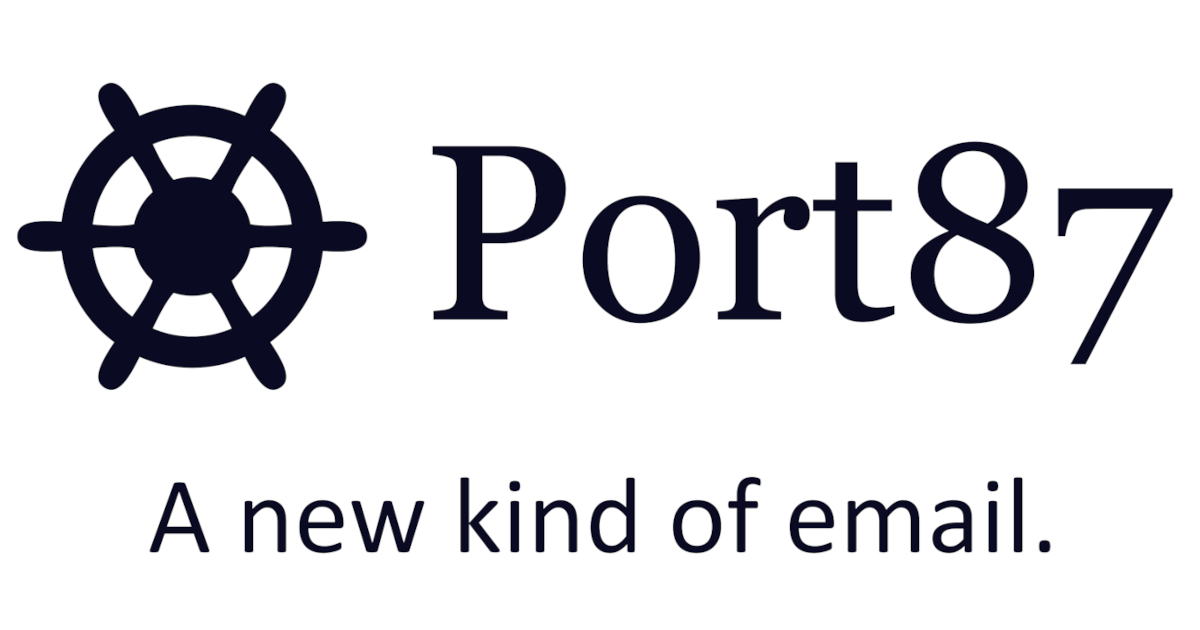Haha, that looks awesome!
I’m Hunter Perrin. I’m a software engineer.
I wrote an email service: https://port87.com
I write free software: https://github.com/sciactive
- 5 Posts
- 268 Comments
Ah, ok. Thank you.
Is that picture from ReBoot?

 2·3 days ago
2·3 days agoI love that this is an article… a text article.

 30·5 days ago
30·5 days agoFastest house in the galaxy. She did the Kessel Run in under 12 parsecs.

 5·7 days ago
5·7 days agoBecause either money or cult like following.
Comfortable sure, but not, like, pajamas.
“What is your biggest weakness?”
“Bullet wounds.”
“…”
“Oh and stab wounds too.”

 2·10 days ago
2·10 days agoShadowsocks doesn’t look anything like HTTPS traffic. It looks like a bare stream cipher over TCP connections to one host with bursts of traffic. HTTPS starts off with a TLS handshake (a client hello, a server hello, the server certificate, then a cipher negotiation and key exchange) before any ciphertext is exchanged. Shadowsocks just starts blasting a ciphertext stream. Even if you run it on port 443, it looks nothing like HTTPS.
Without any sort of cipher negotiation and key exchange, it’s obvious that it’s a stream cipher with a pre shared key, so this would be automatically suspicious. There’s also not really any plausible deniability here. If they probe your Shadowsocks host and see it running there, that’s all the proof they need that you’re breaking their rules. With a VPN, you could at least say it’s for a project, and with SSH, you could say you’re just transferring files to your own machine.

 11·10 days ago
11·10 days agoI mean, they could have used their eyeballs, but we don’t know, because he didn’t say.
Shadowsocks would work, but I feel like bare stream ciphers over TCP are a dead giveaway that you’re bypassing content restrictions. Especially if they probe that host and see it running. But, what do I know? It’s just my job five days a week.

 1·10 days ago
1·10 days agoIt very much is. I used it regularly in both high school and college. In high school it was just how I connected to other machines. One of my teachers taught me how to use it. In college we were told to use it by the professor, so at least one entire class was using it for every assignment. That’s pretty normal in any school that has programming or networking courses.
SSH is usually used for work, so it just looks like someone working. Tor is used for nefarious purposes, so it will always look suspicious. VPNs are used to bypass content restrictions, so they will always look suspicious.

 11·10 days ago
11·10 days agoThey said they got in trouble for Tor, they didn’t say their machine was identified. Even if it was, yet again, there’s nothing suspicious about SSH traffic. SSH traffic looks like work (because it usually is).
And I’ll ask you again, since you avoided the question, what better way is there? What would look more innocent than SSH?

 11·11 days ago
11·11 days agoI helped out with my high school network and SSH absolutely would not have looked suspicious. I can’t say for this school, but that was a regular part of the curriculum in mine. Even if it wasn’t, what are you gonna do as a net admin? You have zero evidence that a student is doing something malicious.
I feel like you’re a script kiddy who got called out for being overly confident online, and now you’re grasping at straws. I literally gave you two outs, and you doubled down every time. There is nothing suspicious about SSH traffic, even in a high school network, let alone a college network, and if you think there is, you’re 100% brand new to the industry.
You still haven’t given any alternative that would look any less suspicious than SSH traffic, and you still haven’t given any method a net admin could use to identify your machine from the countless others that connect to an open WiFi network.
In fact, let’s test you. There’s something that old versions of Firefox will expose, even through a SOCKS proxy. What is it, and what did Firefox introduce to prevent that?

 22·11 days ago
22·11 days agoThese aren’t assumptions. OP states it’s an open WiFi network in their post, and unless you name your computer after yourself, all the network admins can see is your MAC address. And what is suspicious about SSH traffic? And what better way is there? VPN traffic will look more suspicious.
What do you do for a living? I’m a software and network engineer, so this is in my realm of expertise. All the network admins will see is OP’s MAC and that they’re sending a lot of SSH traffic to a Digital Ocean IP (if they even bother to sniff their traffic). This is how I, as a network engineer, have personally bypassed content filters.

 54·11 days ago
54·11 days agoIt’s an open WiFi network. They’re probably not even able to identify which device is used by which person. Even if they could, why would they be monitoring everyone’s traffic looking for users who only visit one resource? That’s an extremely unlikely scenario.
The worst they’d see is that this device is using a lot of SSH traffic. There’s nothing suspicious about that. SSH is perfectly normal.

 202·10 days ago
202·10 days ago- Sign up for Digital Ocean.
- Get the cheapest VM (called Droplets on DO) you can get.
- Install Ubuntu on it.
- SSH into it and open a SOCKS proxy (
ssh -D 8080 <yourdropletip>on Linux, use PuTTY on Windows). - Configure Firefox to use
localhost:8080as a SOCKS5 proxy. - Win.
Bonus points if you set up Cockpit to manage everything over the web (
localhost:9090over your proxy), that way you don’t need to learn all aboutsudo apt whatever.







We’re doing beans again? Good, I stocked up last time and had a bunch left over.